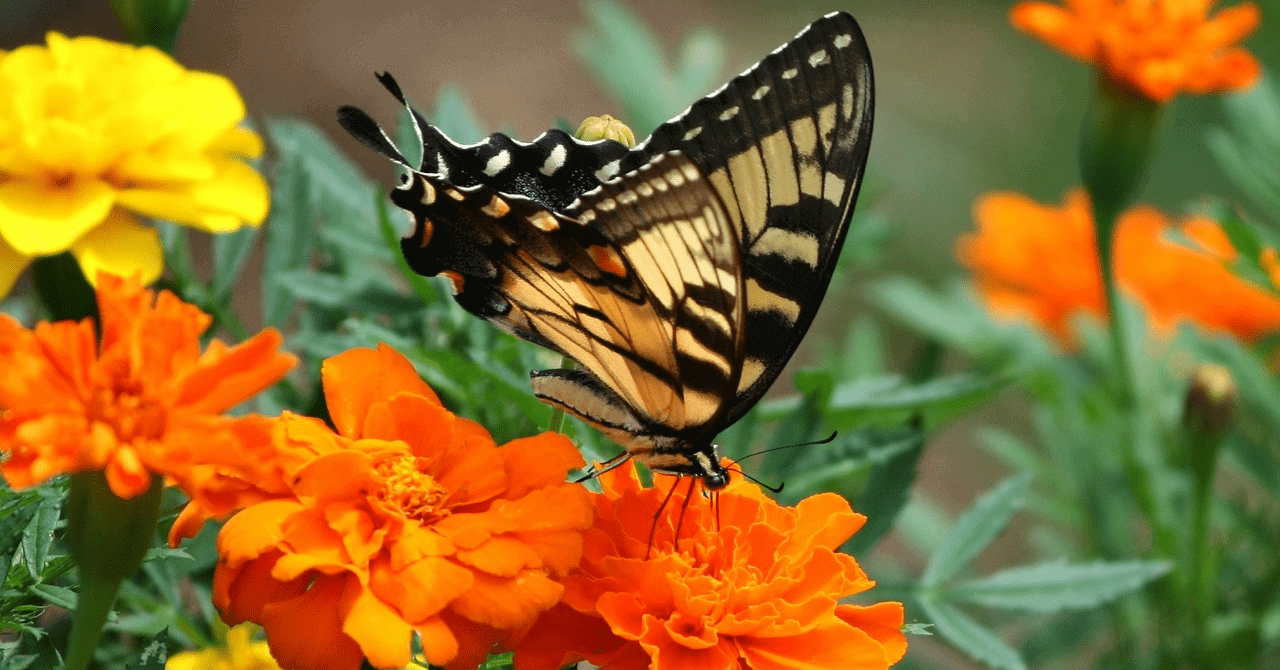A Guide To Successfully Attract Butterflies
Most everyone is enchanted with butterflies as they flutter across a lawn or flower garden landscape. In our efforts to attract Butterflies, most of us do not realize that we often destroy or harm butterflies at some point in their life cycle. Once we are aware of what to look for and how to encourage all phases of the butterfly life cycle we will be rewarded with even more butterflies to grace our garden spaces.
Adult Butterflies lay their tiny white eggs either singly or in clusters that can number up to 200 on the underside of a leaf of their favorite host plant. The eggs usually hatch within a week. The larvae or caterpillars are voracious feeders and many species are ready to pupate in 3 to 4 weeks. During this process they form a chrysalis. There are some species that over winter and hibernate as larvae then pupate in the spring. Several pupae varieties will develop into butterflies within a few weeks, while other varieties such as Swallowtails will winter as pupae. Adult butterflies life spans vary greatly, some will live only 2-3 weeks, while others can live 10 months plus.
Plan Your Garden Around The Full Life Cycle of a Butterfly
Provide host plants for egg laying. Some varieties include:
- Alcea (Hollyhock)
- Asclepias (Wild Milkweed)
- Aster
- Chelone (Turtlehead)
- Lonicera (Honeysuckle)
- Passiflora (Passion Flower)
- Ruta (Rue)
Adult butterflies select plants that emerging caterpillars will feed on for their egg laying. Many vegetable and annual herbs such as cabbage, parsley and carrot make excellent host plants. You have to be willing to share your bounty and not use insecticides in order to preserve your butterflies. If you are trying to attract certain species, find out it’s preferred host plants and make them available in your space.
Plant Nectar-Bearing Plants for adult Butterflies to feed on Including:
- Asclepias (Butterfly Weed)
- Aster novae-angliae (New England Aster)
- Buddleia (Butterfly Bush)
- Caryopteris (Bluebeard)
- Centaurea (Cornflower)
- Coreopsis (Tickseed)
- Dianthus barbatus (Sweet William)
- Echinacea (Coneflower)
- Eupatorium (Joe Pye Weed)
- Lonicera (Honeysuckle)
- Mints
- Monarda (Beebalm)
- Phlox paniculata
- Rudbeckia (Blackeyed Susan)
- Scabiosa (Pincushion Flower)
- Solidago (Goldenrod)
- Verbena species
Planting Tips For Your Butterfly Garden
- Plant masses of color rather than single plants to Attract Butterflies to your garden space.
- Plan for successive bloom all season, as Butterflies need a continuous food source.
- Select bold flower colors such as red, orange, yellow and purple.
- Pick tubular type single flowers such as Lonicera (Honeysuckle) which make reaching the nectar source easier.
- Choose a full sun location (6 hours plus of direct light) that is protected from strong winds.
Additional Hints:
- Provide a water source, preferably a small mud or sand puddle. Adult male Butterflies will on congregate around a mud puddle to acquire drink and essential minerals from the mud that are not provided in their nectar diet. Consider using a terra cotta saucer or other shallow container.
- Add a bench or sitting area for yourself to view the butterflies that visit.
- LIMIT insecticide use. To protect specific plants such as vegetables from caterpillars consider netting them so that the adult Butterflies do not lay their eggs on those plants.
- Watch for the tiny Butterfly eggs on host plants and be careful not to disturb them.
If you liked this post, check out How To Create A Pollinator Garden

